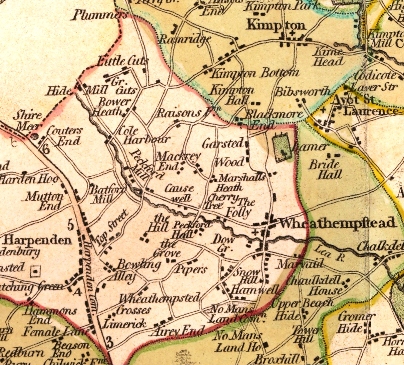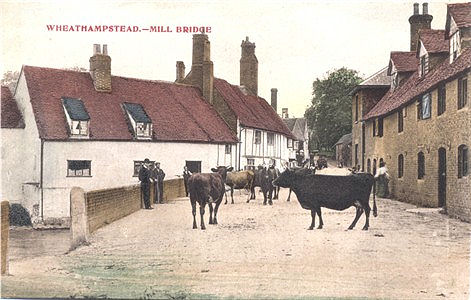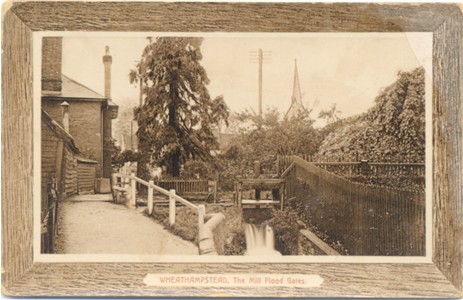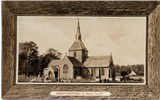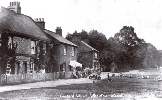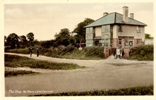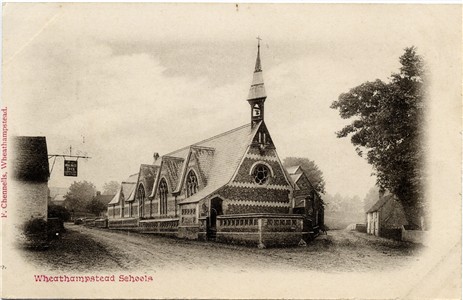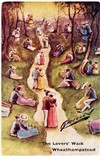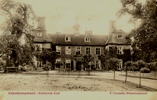|
Wheathampstead |
|
Wheathampstead village and parish are in the hundred of Dacorum; the village is 24 miles N.N.W. from London, 5 N. from St Albans, rather more than 4 miles W.S.W. from Welwyn, and 8 S.S.E. from Luton, in Bedfordshire - situated upon the navigable river Lea. Although at the present day the place presents little worthy of description, yet its name is connected with an occurrence of some importance in the fourteenth century - here it was that, in 1311, the barons confederating against Edward II concentrated their followers. Brewing and Malting are the most prominent branches of business carried out in the village, and a paper mill gives employment to some hands. The parish church, dedicated to St Helen, is an antique cruciform fabric, with a tower springing from the intersection of the transept and the nave; the living is a rectory, in the gift of the Bishop of Lincoln, and the present incumbency of the Rev Geo, Thomas Prettyman [Pretyman], whose curate is the Rev Joseph Douton. The independents have a chapel, and there is a school conducted upon the national system. The parish, in 1831, contained 1,666 inhabitants. Pigot's Hertfordshire Directory, 1839
|
Adjacent Parishes: Harpenden, Kimpton, Luton (Beds), Redbourn, Sandridge, St Michael |
|||
|
Wheathampstead is in the Hundred of Dacorum, but not in the modern Borough of Dacorum. |
||||
| The Parish was part of the St Albans Union. | ||||
| If you have a relevant question why not Ask Chris | ||||
|
If you know of other books, websites, etc, relating to this place, please tell me. |
|
|


